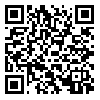BibTeX | RIS | EndNote | Medlars | ProCite | Reference Manager | RefWorks
Send citation to:
URL: http://jdm.tums.ac.ir/article-1-13-en.html
Background and Aims: Different mechanisms have been developed for connecting abutment to implant. One of the most popular mechanisms is Tapered Integrated Screw (TIS), which is a Tapered Interference Fit (TIF) with a screw integrated at the bottom of that. The aim of this study was to investigate the mechanism of TIS and effective factors in employing TIS during design and implementation processes using an analytic method.
Materials and Methods: Relevant equations were developed to predict tightening and loosening torques, contact pressure and preloads with and without bone tissue in this analysis. The efficiency is defined as the ratio of the loosening torque to the tightening torque. The effects of the change in elastic modulus and thickness of the bone on operation of this mechanism were investigated.
Results: In this study, 14 independent parameters such as taper angle, friction coefficient, abutment and implant geometry that are effective on performance of TIS mechanism were presented. The role of some factors was shown in the performance of ITI implant using sensitivity analysis.
Conclusion: It was shown that friction coefficient, contact length, and implant radius play major roles on tightening and loosening torques and efficiency of the mechanism. Furthermore, the results revealed that the change in the elastic modulus and thickness of the bone influenced the efficiency of the mechanism less than 15%.
Received: 2012/04/20 | Accepted: 2013/01/27 | Published: 2013/09/16
| Rights and Permissions | |
 |
This work is licensed under a Creative Commons Attribution-NonCommercial 4.0 International License. |




